How Do I Draw A Weave Pattern
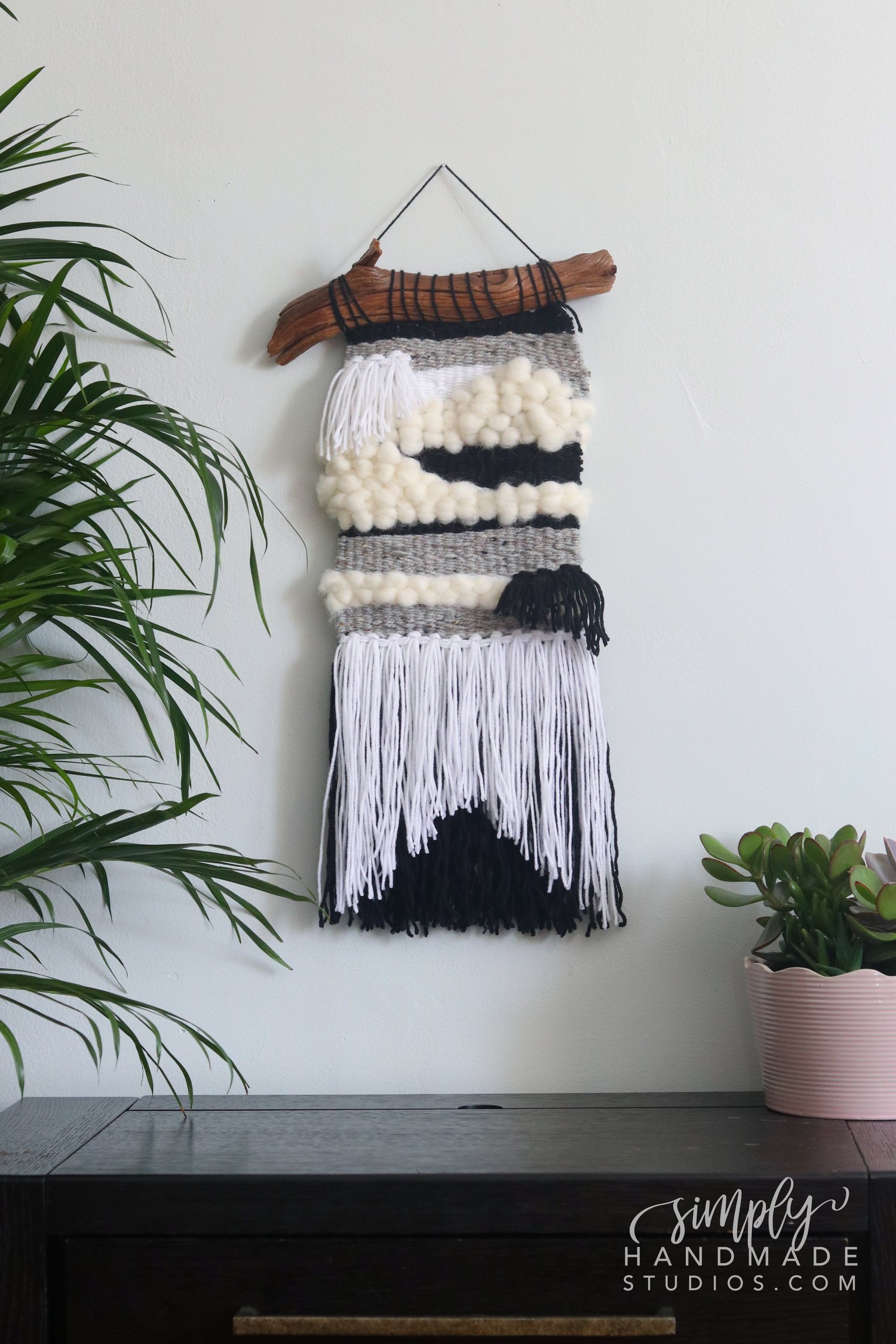
Acquire to Weave: three Bones Weaving Patterns for Beginners
If yous read my concluding post then y'all'll know I'yard absolutely OBSESSED with weaving. The history is absolutely astonishing and I knew I wanted to be a role of this aboriginal art. I know I said this before but did you know other cultures accept their way of weaving??

Weaver making gorgeous Kente Cloth in Africa

Women making cloth for handbags in Asia
This ancient art was done for and so long and was their primary source of textiles!! Become ahead and google it if you lot're interested but I won't become into depth about this amazing history in this blog post :) . Let's get to weaving!
Ok, ok, I know I said let's start BUT I do have a question for you: Have you signed upwardly for my electronic mail list? Get DIY goodness in your inbox and exist the beginning to know when a post goes alive! Sign up by clicking here!
Ok, now let'due south go started. For real this fourth dimension :)
Materials Yous'll demand for this Project:
Crochet Thread (I used white but you can utilise whatever color you like!)
Yarn (once more, the colors are up to yous)
Roving (if yous choose to make the pile weave pattern)
Shed Stick (wooden dowel would do fine)
Ruler or 1-inch thick cardboard the aforementioned size as the loom
Needle for the yarn
Plastic Fork
Long Stick or sparse, long paint brush
Scissors
Branch or wooden dowel for hanging
I'm going to be breaking this projection down into 3 techniques. There are SO many more techniques you can do just I feel if you lot get these techniques downwardly, you'll be able to create and then many unlike types of wall hangings!
Before we get into the techniques, we take to prep our loom.

I tied thread to the peak left blast of the loom and looped the thread across ii nails (remember I said I like the await of the loose weave? I did this to achieve that look!). Observe that I'thousand skipping a nail in between the loops. This is done to brand sure the thread is straight and not on a weird angle.

You want to make certain the thread is nice and tight since information technology'southward basically holding the wall hanging together. Tie off the end and take hold of your stick.. aka shed stick

I actually used a dowel here and it broke off on an bending which turned out to be perfect.. I took that shed stick and went over, and under each thread like y'all run across here.

I went alee and prepped my yarn.. hither you're seeing me wrap the yarn around .. I did this almost a hundred times and bam you accept long strands for the fringe subsequently.

I added a ruler for the base of the weaving loom and strung the yarn through the needle.
Alright at present moving onto the weaving techniques!

WEAVING PATTERNS: TABBY WEAVE
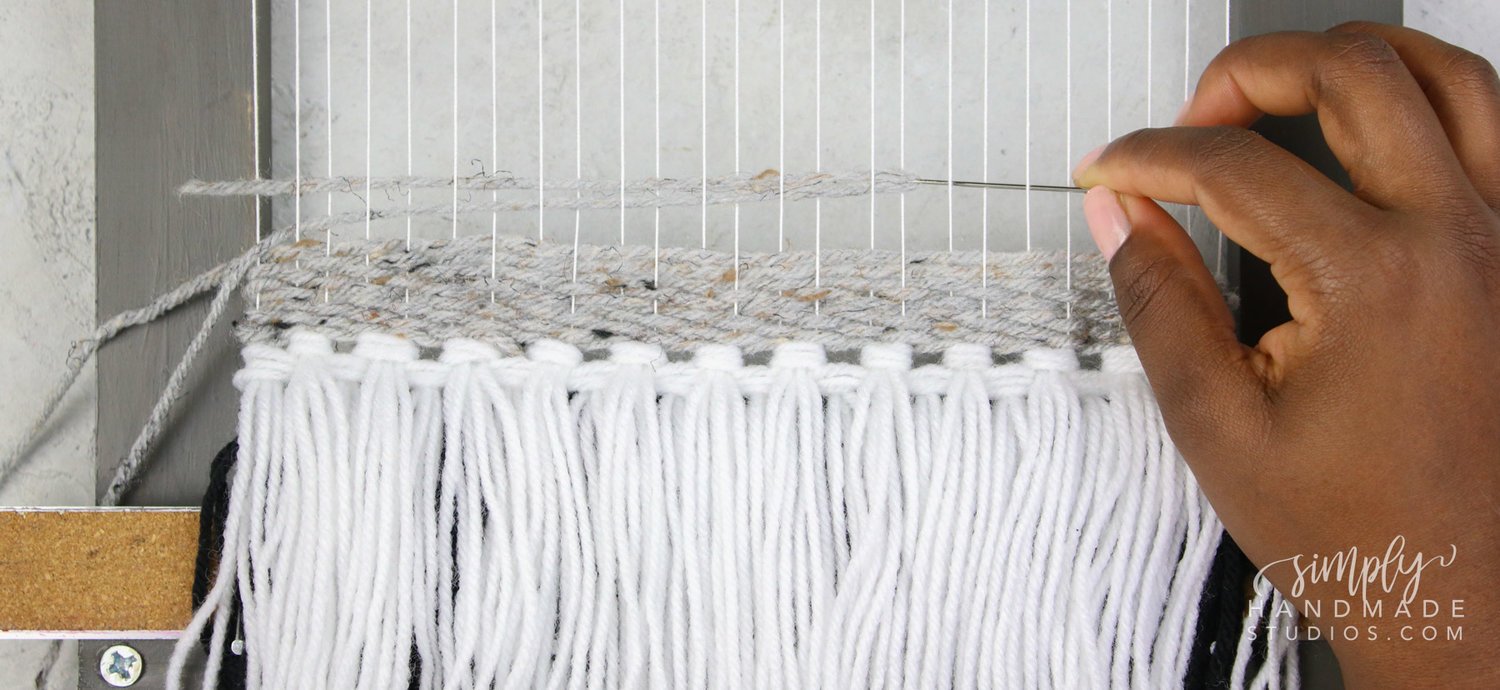
I took the end of the yarn and put it through the thread toward the bottom of the loom. I went back to the pinnacle and began the weaving process. Similar to the shed stick, you'll desire to get over every other thread.

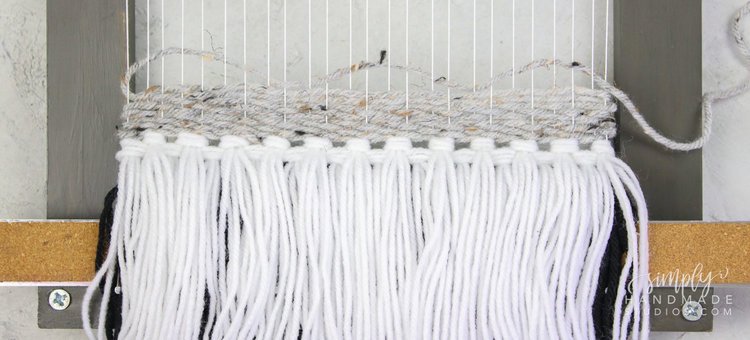

One time you get to the end, you lot'll desire to class an arch and use a fork to carve up it in 3 then printing the balance of the yarn downwards. The outset few lines will be really loose but don't worry well-nigh it.. doing this arch technique volition help you not to pull the yarn as well tight.
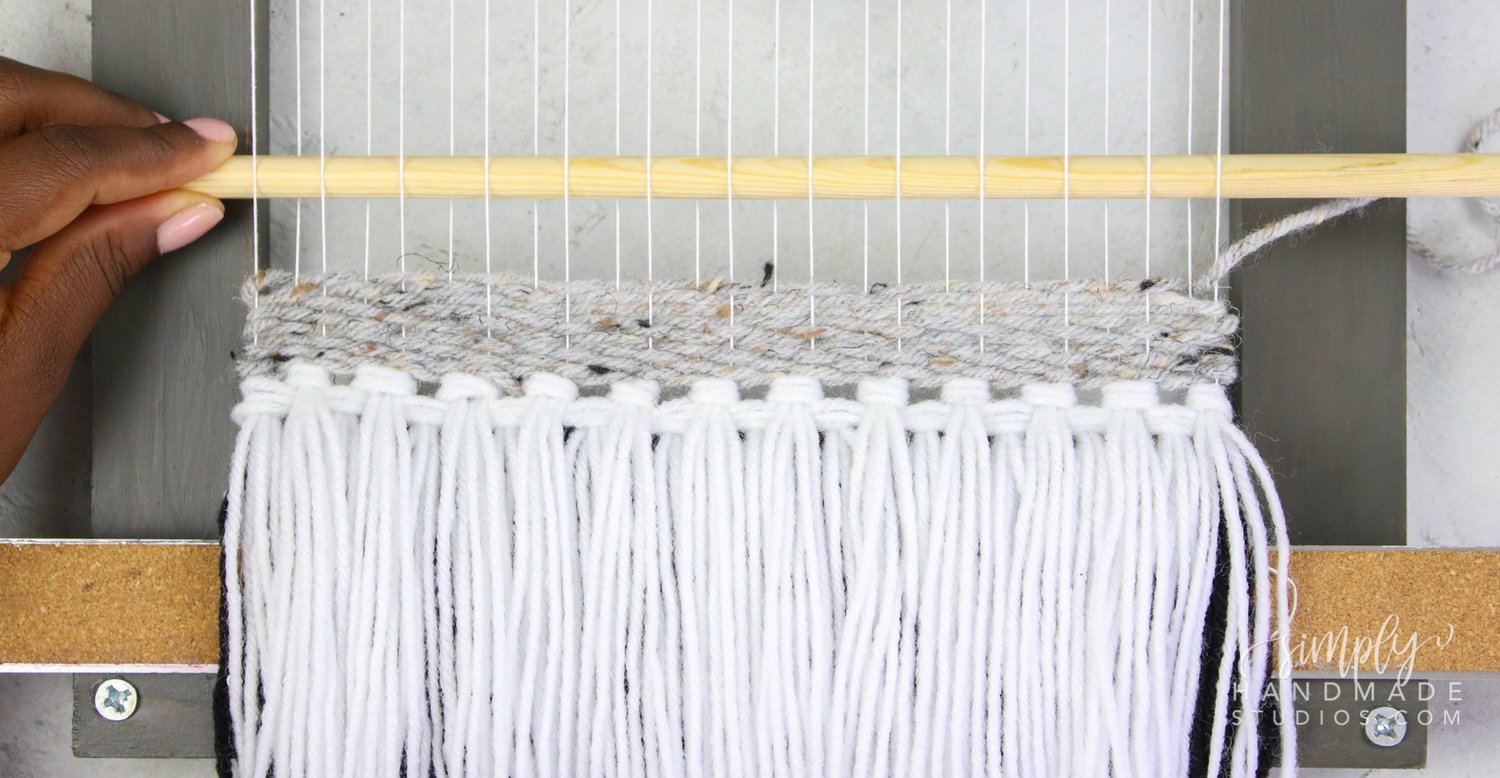
Move onto the side by side row past going over and under on the opposite strands of the row underneath. This is where the shed stick comes into play. It pretty much divides the thread for y'all so you tin just go right through.

Keep weaving until you have about 12 rows. This section is called a heading and serves as an anchor betoken for the rest of the weave (images to a higher place isn't necessarily the beginning but information technology serves the same purpose).
To finish the tabby weave, just string the yarn through the back of the loom. If you happen to run out of yarn, terminate the weave and pick upwards correct where you left off.
One time you've got the tabby weave downward, let'southward motility onto adjacent technique.
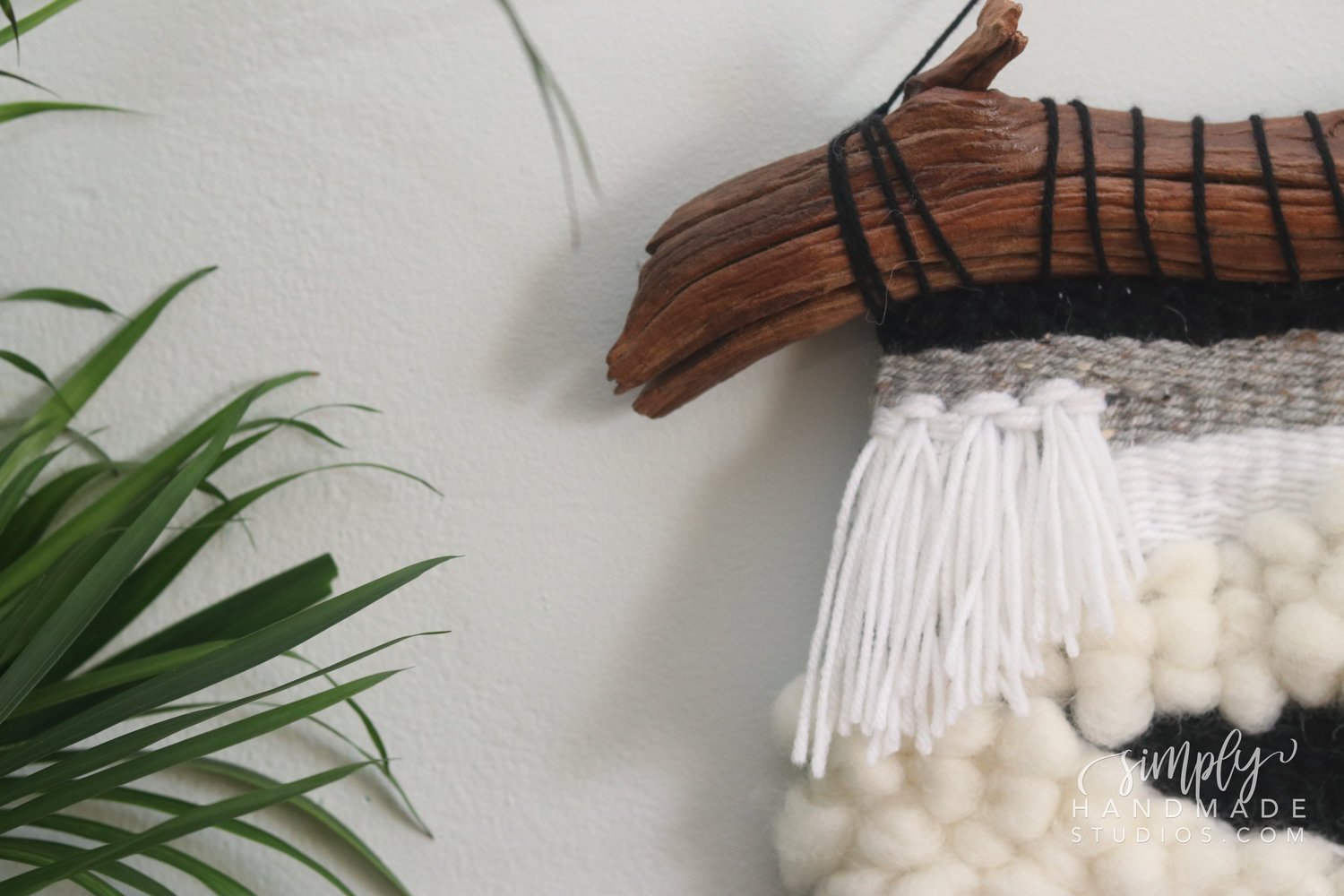
WEAVING PATTERNS: RAYA KNOTS
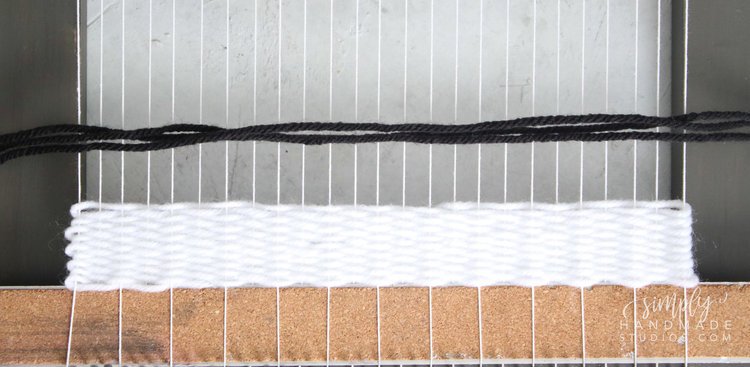



Next upwards Is the raya knot. This is ridiculously easy to do. I grabbed three strands of the yarn I prepped earlier and found the center. I laid information technology in a higher place two strands of thread and fed the strands underneath on either side
Pull the yarn out, slide it toward the top and dorsum downwardly to tighten.

At the very end you'll almost likely take an uneven amount of thread.. that's okay only add together a knot on the last two then once again in betwixt each raya knot. You won't discover this gap in one case you outset weaving once more. I added two rows of white raya knots then moved onto tabby weaving once again.
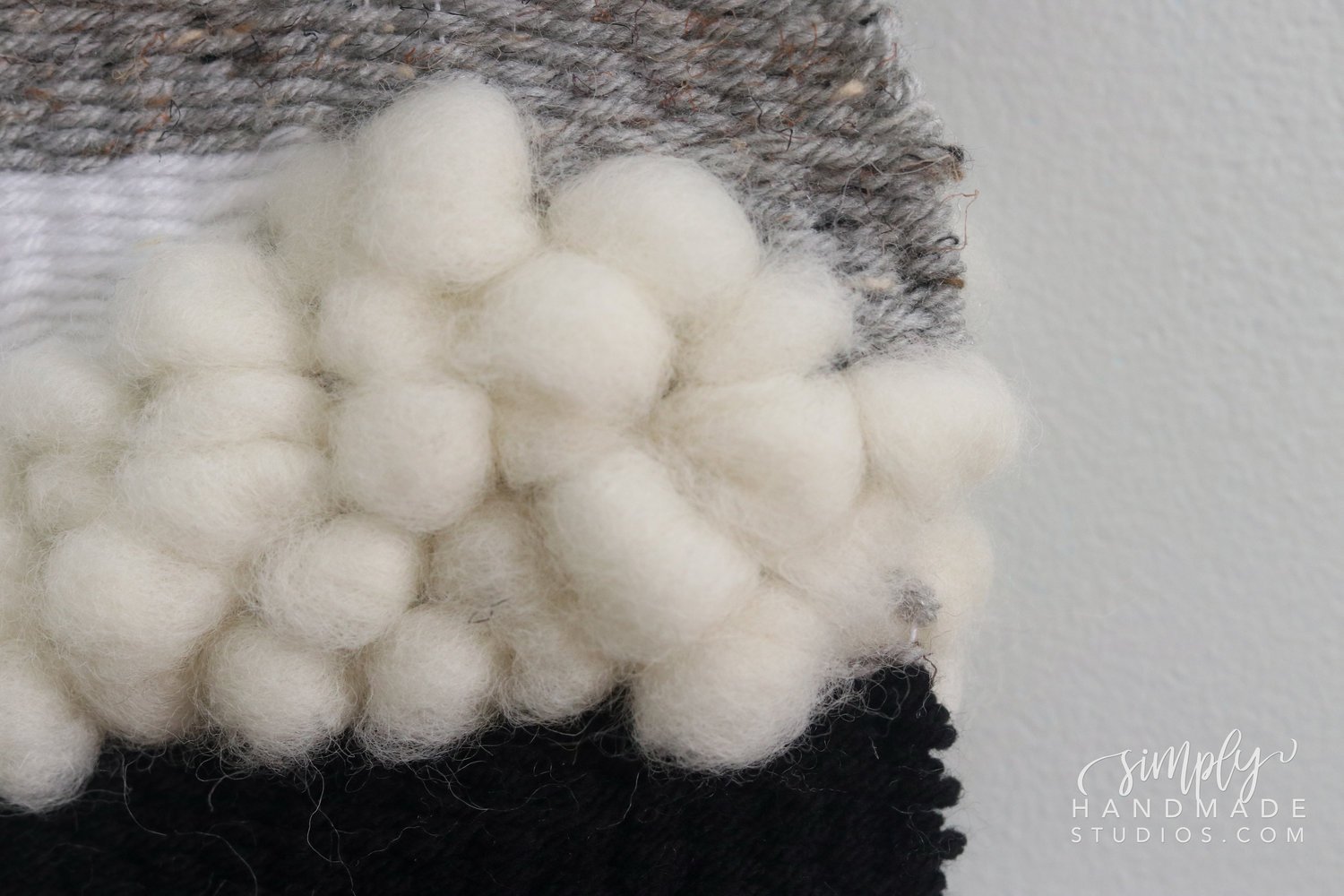
WEAVING PATTERNS: PILE
Once I was done with the tabby weave, I moved onto the cloud similar weave called piles.
These cloud like texture is fabricated with a special fabric chosen roving. Information technology doesn't tear apart under a lot of strain but will when there's a chip of separation.


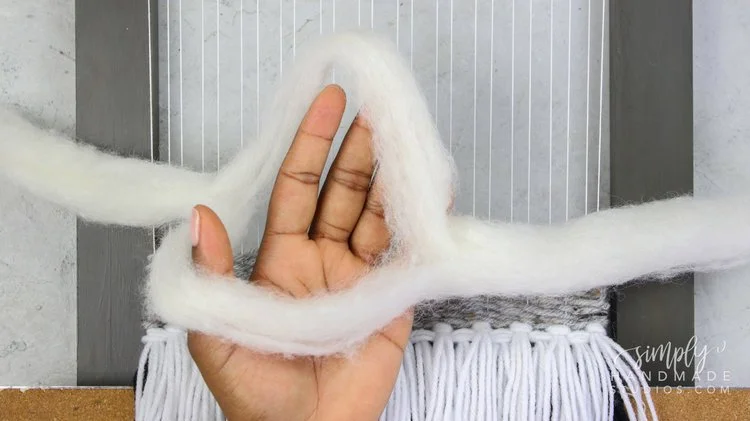
I got this pack and I have length slightly longer than the loom and separated the roving in one-half.

I weaved a little and pulled the roving through the bottom and then began the offset row the aforementioned way I did with the tabby weave.
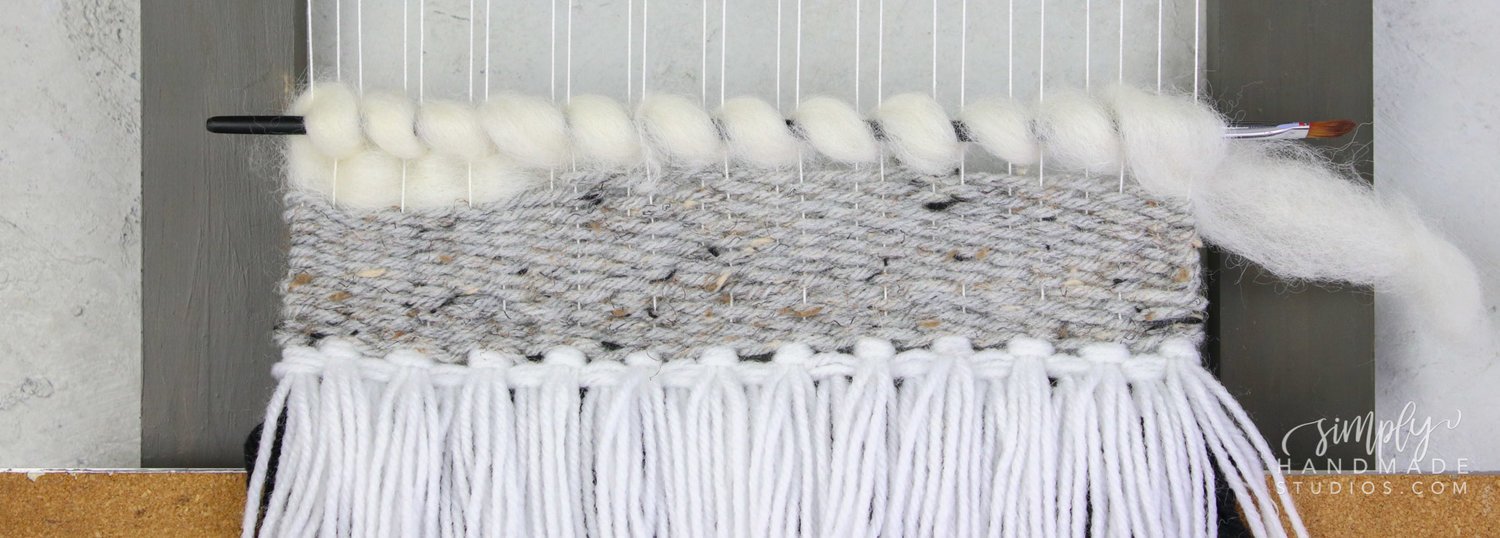
One time I strung the roving through the rows, I grabbed a long paint brush and started twirling the roving forth itself. Notice how I take a loop of extra roving on the side to let for the pull of the loops.
I added some raya knots, and tabby weave in gray and blackness and so moved onto some more piles.
I decided to practice a little blueprint so I did 2 rows of piles and so a third only stopped midway through and added a tabby weave at the meridian. Just like the tabby, to stop the roving just pull the material through toward the bottom of the loom.
Subsequently I made a pile design I was happy with, I filled in the gaps with tabby weave. This isn't difficult to do merely weave in the empty areas.
Confused? Cheque out the video below!
FINISHING Upward THE WALL HANGING
Continue making whatever pattern yous similar so stop weaving when you're about two inches from the top of the loom.
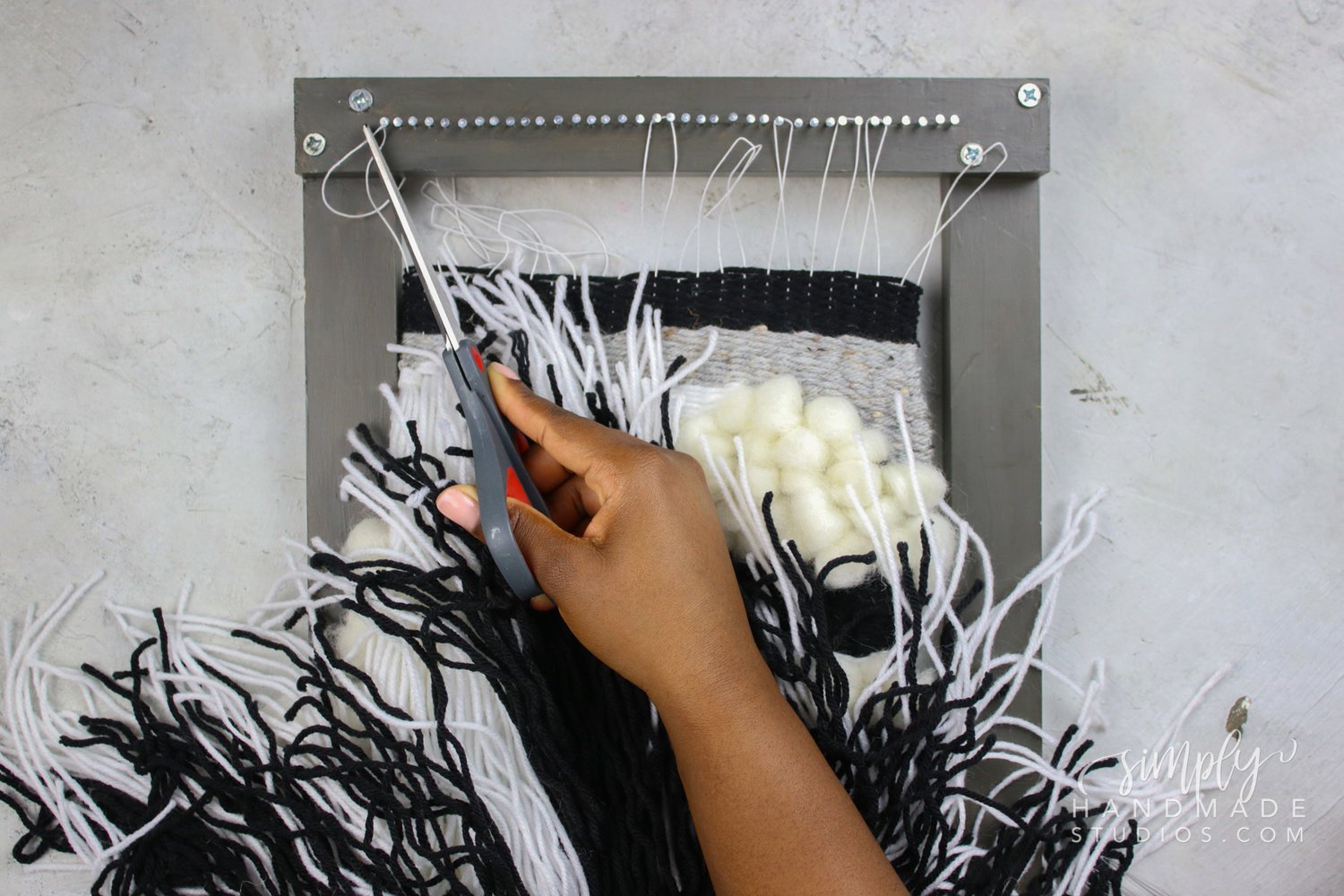
Start taking the weaving off from the bottom. I cut the knot I made on the cease and used a fork to gently pry off the loops from the nails.

After everything was loose, I tied a knot on each of the loops and repeated the aforementioned for the height. I did combine the unmarried thread and a loop for a secure concur.

The dorsum of the wall hanging will look messy like this so I only cleaned it upward by tying the roving together and using the needle to cord some yarn through the loops and cutting off the backlog. I did the same with the top loops that were hanging and attached this branch to it and that's it!


I couldn't finish this blog post with this photo! I had my lilliputian helper with me the unabridged fourth dimension I was styling this shoot. I dear this little guy (and his brother, of course!)



I hope you enjoy this and I promise it gets y'all inspired to go out and create! This wall decor is so beautiful and I'm loving this "trend".
Source: https://www.simplyhandmadestudios.com/blog/learn-to-weave-3-basic-weaving-patterns-for-beginners
Posted by: kittstuaque.blogspot.com


0 Response to "How Do I Draw A Weave Pattern"
Post a Comment